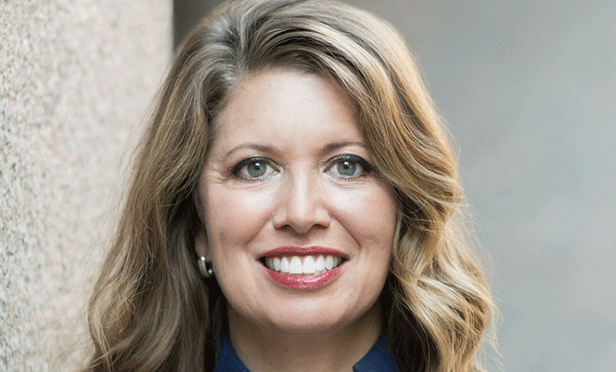The commercial real estate brokerage industry is at the edge of a demographic precipice. According to NAR research, with a median age of 60 years old, CRE brokers as a group are substantially older than the average funeral home director (median age of 53.1), textile mill worker (51.5) and religious organization employee (51.5), who work at the three oldest industries as recorded by the Bureau of Labor Statistics for 2017. How did this happen?
The following are five factors that have contributed to the aging of the CRE industry:
*A tale of two recessions. Generation X and millennials were both hit at the beginning of their careers with recessions (the early 1990s and 2007). This meant that CRE was not a career option for young or new to the business professionals for years at a time. There was also a hangover effect from these recessions, where young people didn't see their peers in the industry and, as a result, CRE careers were rarely on their radar screen.
*The dominance of dinosaur companies. An industry- wide resistance to technology and the dominance of companies with over 100 years of history do not fit the cultural expectations of the entrepreneurial, growth- oriented companies that young people want to work for today.
*CREtech is an employment alternative. CRE technology is a new and fast-growing industry and is attracting many young people who have an interest in real estate. Millennials and Generation Z candidates, who might have otherwise pursued brokerage careers, are instead opting to work for tech startups in the real estate space.
*Licensing boards focus on residential real estate. The commercial part of real estate is rarely included in education and licensing. This means that only those who already know they want to be in commercial real estate are likely to pursue it.
*Student loans. Commissioned-based brokerage work is hard to take on for someone with student loans, thereby eliminating many potential candidates.
With the majority of the CRE brokerage industry close to retirement, and the pool of traditional CRE talent constantly shrinking, it's time for the industry to be more proactive about diversity and inclusion.
➤➤ Join the GlobeSt.com Women of Influence 2019 conference July 10th and 11th in Broomfield, CO, which celebrates the women who drive the commercial real estate industry forward. The event will address the critical role of women in the CRE business. Click here to register and view the agenda.
Diversity and Include as a Competitive Advantage:
For every study that shows that having a diverse team is a financial advantage there are exactly none that say the opposite. Almost every issue has at least one opposing study or argument being made. The subject of diversity and inclusion appears to be the exception. When done properly, diversity and inclusion efforts result in increased revenues. In 2015, a McKinsey Report looked at 366 public companies in various countries and found that more ethnically and gender-diverse companies performed significantly better than others.
*The top quartile of companies for racial and ethnic diversity were 35% more likely to have superior financial performance.
*The top quartile for gender diversity were 15% more likely to have superior financial performance.
McKinsey updated the report in 2018, widening its pool of companies to 1,000, and its conclusions were consistent— finding out performance for racial and ethnic diversity of 33%, and 21% for gender diversity.
Similarly, a 2018 Boston Consulting Group report found that companies reporting above-average diversity on their management teams also reported innovation revenue that was 19% higher than that of companies with below-average leadership diversity—45% of total revenue versus just 26%.
Why the increase in financial performance and innovation? Diverse teams are better at problem-solving, because diverse teams bring new experiences and different ideas to the table.
With both a defensive reason (the intense competition for talent) and a competitive reason (financial and innovative advantages), why aren't CRE companies doing a better job expanding the talent pool to include women and people of color? There appears to be two reasons. First, it's always easier to do nothing. But second, the CRE industry needs to better understand the difference between diversity and inclusion and why it needs both.
Diversity and Inclusion aren't the same thing
While we may see the words used interchangeably, diversity and inclusion are not the same thing. Jane Silber, board member and former CEO of Canonical, Ltd., a UK-based tech company, once said, “the difference between diversity and inclusion is being invited to a house and being able to rearrange the furniture.” In other words, when employees are “diverse” they are guests, until you make them feel comfortable enough to feel at home.
It's not enough to hire someone because they are different. Inclusive companies empower and embrace those differences as part of their core. Making diverse and underrepresented people feel safe and a part of company culture is something that the CRE industry has yet to do with any success.
Unfortunately, unlike in most industries, there is a pipeline problem within CRE, and it's not just due to the lack of millennials, the most diverse generation to date. It's because the closed network status of commercial real estate has prevented women and people of color from entering into the industry pipeline and, more importantly, staying long enough to change the dynamics at the top.
The lack of women and people of color in executive roles in CRE makes it difficult to attract younger and diverse candidates to the business. If new recruits look upward and don't see anyone who looks like them, they will likely conclude there is little opportunity for their own career growth.
How can the industry make changes at the top, or at least provide younger and underrepresented groups with role models?
*Recruit with intentionality. Work with recruiters to find women and/or persons of color for senior positions. It may take longer, and you may have to bring in candidates from related industries, but it is possible.
*Provide appropriate support. Senior executives who are underrepresented in an industry may need additional support to succeed, something outlined in the rest of this paper.
*Recommend women and persons of color for speaking engagements. Most conferences are trying to find diverse speakers and panelists, especially in industries lacking in diversity. Instead of sending the same individuals to panels, spread the opportunities around.
Diane K. Danielson is the COO of SVN International Corp. The views expressed here are the author's own and not that of ALM's Real Estate Media Group.
Check back with GlobeSt.com for more from Danielson on the topic of diversity and inclusion in the coming weeks, including more on how to build an inclusive company culture as well as what you can do as an individual to be more inclusive. In addition, keep an eye out for the July/August issue of Real Estate Forum magazine where we will highlight the many achievements of women in the industry and of course, join the GlobeSt.com Women of Influence 2019 conference July 10 and 11 in Broomfield, CO, which celebrates the women who drive the commercial real estate industry forward.
© 2025 ALM Global, LLC, All Rights Reserved. Request academic re-use from www.copyright.com. All other uses, submit a request to [email protected]. For more information visit Asset & Logo Licensing.








